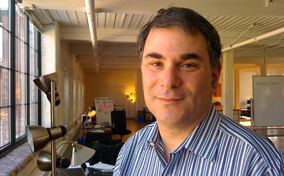 This is the fifth of a series of conversations originally published on the Time website , authored by myself and Nicha Ratana, with transformational leaders who will be storytellers at the BIF10 Collaborative Innovation Summit in Providence, RI, on Sept. 17-18.
This is the fifth of a series of conversations originally published on the Time website , authored by myself and Nicha Ratana, with transformational leaders who will be storytellers at the BIF10 Collaborative Innovation Summit in Providence, RI, on Sept. 17-18.
Richard Saul Wurman, best known as the founder of the TED conference, has made it his job to produce clarity out of the complex. In Newport, RI, lives an old magician in splendid, self-imposed exile.
His eclectic body of work boasts over 80 books, including the original Access city guides, the bestsellers Information Anxiety and Information Anxiety II, as well as esteemed companions on all topics from football, to estate-planning, to healthcare. He has founded 40-odd conferences and chaired numerous information-mapping projects.
In conversation, Wurman speaks with unapologetic honesty, which one comes to appreciate. He has light eyes and a hawk-like profile. He describes himself as “abrasive, but also charming.”
Wurman lives with his wife in a 19th-century mansion on eight high-walled acres. They have few friends in Newport. He admits they prefer it that way. “I live reclusively behind a fence,” he jokes, “The town put it up to keep me in.”
Outside of Newport, Wurman is someone who enjoys what the New York Times describes as “a happy notoriety as a connector and king-maker.”
“My interests are only apparently varied,” he claims. “I’m Johnny-one-note. My passion is less the subject, and more the patterns. Everything connects and can be mapped, and the mapping of that is fascinating to me.”
Of his business philosophy, Wurman says he sees “every book, every conference, every design” as an experiment on how he can get people closer to “telling the truth.”
When asked about how he developed his mission, Wurman reflects on his college days. He had been an accomplished student of architecture at the University of Pennsylvania, graduating with the highest honors. Despite this success, he eventually came to realize that he “didn’t actually understand anything.” He claims, “I realized that just because somebody told me something, it doesn’t mean I understood it. And that was terrifying.”
“I’m not very bright intellectually, but I’ve decided to not by humiliated by my ignorance,” he says. “What a joy it is, to really not know something and slowly fill it in with things you understand!”
Wurman claims to be consistently self-serving.
“I use myself as the basis,” he says. “Every time, it’s a journey from me not knowing, to knowing about something.” Nor does he believe in complicating his goals by worrying over how people will receive his projects. “If you try to have that effect, it affects your own work. I don’t want to change my work. I already have a client. That client’s me.”
His latest project is Urban Observatories, a permanent exhibit in the Smithsonian (complete with its own app), dedicated to providing an intuitive platform to compare live-population trend maps of major cities.
“I’m just trying to understand things,” he says, “I’m not trying to change the world.”
Yet he acknowledges that the implications of the project are immense. From enabling governments to make use of the failures and successes of other cities, to helping families decide where to take root and companies where to relocate, Wurman’s project explodes the potential of comparative cartography by conducting its study on an unprecedented scale.
Richard Saul Wurman coined the term “information architect” to describe his particular set of talents.
It is easy to see how his architectural background continues to influence his work. Wurman’s projects deal deftly with questions of experience design, structural integrity and intention and result.
The 18-minute TED Talk had been his answer to question of how to deliver the “Next Big Idea” in an age pressed for time. He sold TED in 2002, after which, he claims, the conference began editing talks and using teleprompters, a practice Wurman finds appalling. ”
In 2004, Wurman advised his friend Saul Kaplan as Kaplan’s nonprofit, The Business Innovation Factory (BIF) in Providence, RI, was designing its first annual Collaborative Innovation Summit. As Wurman mentored Kaplan, they worked by subtracting from the usual style of business conferences.
They eliminated the podium and numerous projection screens in favor of a simple, well-lit stage. There was no dress code; “I don’t own a suit,” Wurman says. They requested from their speakers personal stories of transformation, not speeches or pitches.
Wurman looks forward to returning to the BIF Summit in September. The summit, he claims, “unequivocally attracts smart individuals who tell a fresh story about their passions, ideas and failures.” He adds, “Looking in the gray area between these stories is where good, inspiring concepts will arise.”
Wurman shares his secret to hosting a good conference: “Have a dinner party,” he says. “Invite people you’re interested in and have conversation with them.”
The BIF Collaborative Innovation Summit combines 30 brilliant storytellers with more than 400 innovation junkies in a two-day storytelling jam, featuring tales of personal discovery and transformation that spark real connection and “random collisions of unusual suspects.”









Leave a Reply